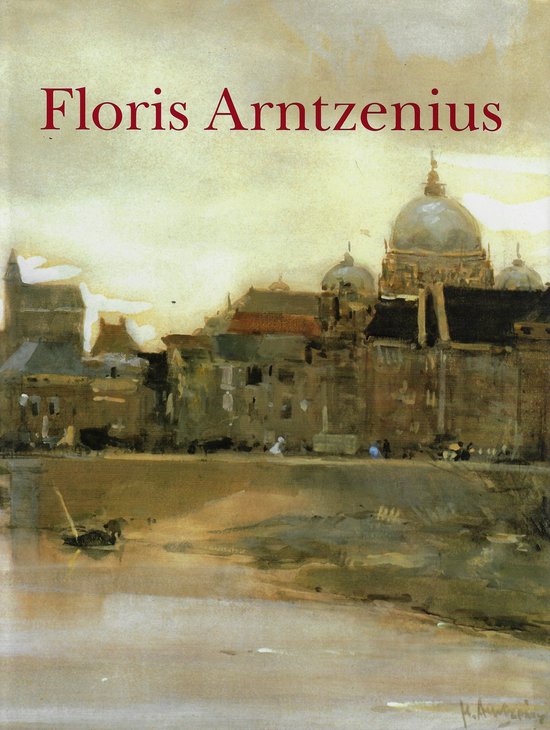Floris Arntzenius (Soerabaja 1864-1925 The Hague) moved to Amsterdam with his parents when he was ten. He received his education there at the National Academy, together with Isaac Israels, Willem Witsen and G.H. Breitner, whose impressionistic style of painting he greatly admired. Later, another year of teaching follows at the Antwerp academy. When his father dies and his mother is homesick for the Indian atmosphere, The Hague, with a large Indian community, becomes his new place of residence. Arntzenius will live and work here for the rest of his life as a very versatile artist. When you hear the name Arnzenius, you quickly think of crowded, wet, asphalted, reflective streets. Depicting the reflection of clouds, facades and figures during drizzly days is a joy for the artist and he has made it his main theme. He is clearly from the generation of artists after the Hague School and therefore moves into the city instead of outside and consciously seeks out the modern life of his time and the hustle and bustle of the city. Strolling ladies, shoppers, carts and trams, butcher's and baker's boys delivering food and horses pulling carriages. He is sometimes called 'the master of the streets of The Hague'. Besides working in the city, he works, as do Johannes Akkeringa and W.B. Tholen, along the canal to Scheveningen, where ships remove the sand and at the Haringkade, where net makers are busy and on the beach. And his spontaneously created portraits are the very best.
With fairly broad strokes of paint he manages to capture the clouds in the sky and the humidity in such a way that the viewer is drawn into the atmosphere of that day. Although the painter usually works in sober tones, he uses certain color accents in cobalt blue, red, green, yellow or white to add extra vibrancy to the scene. A regularly recurring element in his work for this purpose is a white horse or the butcher's boy in a white smock as a clear contrast and (almost) centerpiece.

In 1890 wordt hij lid van Arti et Amicitiae en in 1891 ook van Sint-Lucas. Later wordt Floris ook lid van Pulchri Studio en van de Hollandsche Teeken Maatschappij. Hij had een ruime vriendenkring met onder anderen Johannes Akkeringa, Isaac Israels, Willem Maris, Willem Bastiaan Tholen en Willem de Zwart.

Aan het eind van zijn leven keert Arntzenius zich af van de 'woelige straattoneeltjes' en richt zich op bloemstillevens met een bijzondere lichtinval waardoor ze prachtig verstild zijn. Hij heeft zich nooit geweld aangedaan 'anders' te gaan werken omdat de tijd dit vroeg, maar volgde altijd te midden van veranderende richtingen rustig zijn eigen weg.

In 1900 trouwt Floris met de schilderes Lide Doorman, met wie hij vier dochters krijgt. Tijdens haar huwelijk geeft zij altijd voorrang aan haar gezin en het werk van haar man. Pas na zijn overlijden pakt ze het schilderen weer op en doet dat tot aan haar dood in 1954. Haar onderwerpen waren stillevens, vooral bloemen, en portretjes.

Hij hield niet van opdrachten, maar heeft zich er toch niet aan willen onttrekken. Zij vormden, naast de vele werken die hij geregeld op zijn tentoonstellingen verkocht, een goede bron van inkomsten. Talrijk zijn de vlotte tekeningen en aquarellen van vrienden en bekenden, waargenomen op tentoonstellingen, in de sociëteit of op veilingen in Pulchri en in Riche, stamcafé van vele Hagenaars. Zijn hele leven heeft Arntzenius daarmee goed verkocht; met vrij werk hij won prijzen op internationale tentoonstellingen in München, Venetië, Pittsburg en Brussel. Zijn werk is onder meer opgenomen in de collectie van het Kunstmuseum Den Haag.
Meer lezen?

